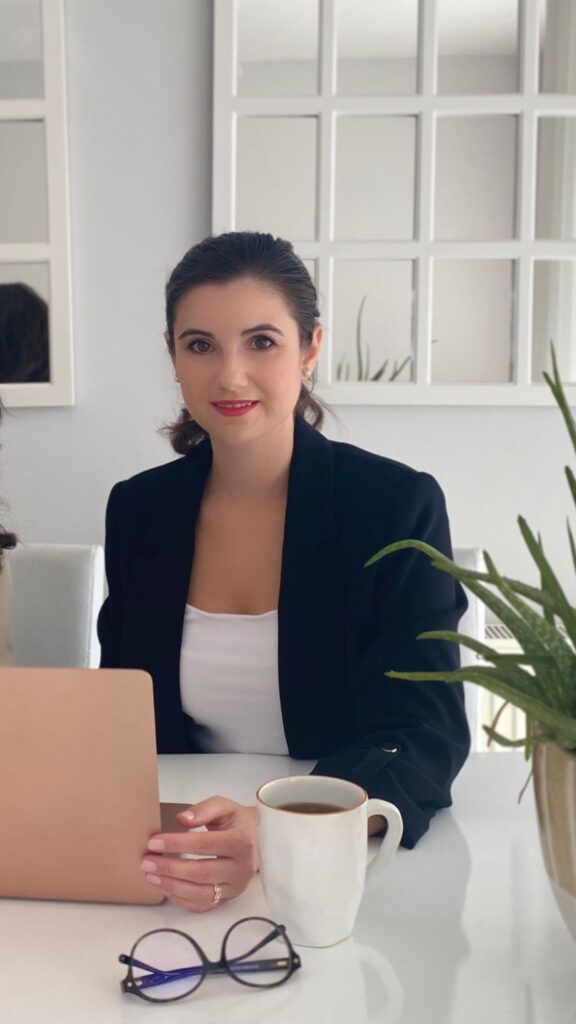Table of Contents
Form (Şekil)


For the affirmative, we use
subject + be + verb + –ing.
Examples:
Tom‘s watching a reality show.
We‘re reading a blog.
For the negative, we put not after be.
Examples:
She is not (isn‘t) downloading songs.
To form questions, we use
be + subject + verb + –ing.
Examples:
Are you watching cartoons?
!!!
We don’t use the verb + -ing in short answers.
Examples:
Yes, I am. (NOT Yes, I am listening.)
We form information questions with the Wh– question word before be.
Examples:
Who are you reading about?
What are you watching on TV?
Meaning and Uses ( Anlam ve Kullanımlar )
There are two very different time references with present Continuous:
A. ‘Now’ and ‘around now’.
B. ‘Future arrangements’
Present Continuous ile çok farklı iki zaman referansı vardır:
A. ‘Şimdi’ ve ‘şimdi civarında’.
B. ‘Gelecek düzenlemeleri’
A. Now and around now ('Şimdi' ve 'şimdi civarında')
The most common use of the Progressive (Continuous) forms is to talk about an action or situation that is already going on at the moment of speaking / now or around now
We can use the present progressive to talk about:
Present Continuous ‘ın en yaygın kullanımı, konuşma anında / şimdi veya şu anda devam eden bir eylem veya durumdan bahsetmektir.
Present progressive’i şu konularda konuşmak için kullanabiliriz:
1. Things happening right at this moment, now.
We use the Present Continuous to talk about actions in progress at the time of speaking.
Examples:
You are learning about the Present Continuous.
I’m waiting for you to answer.
I’m calling from Reception.
I’m writing on the board.
1. Şu anda, şimdi olan şeyler.
Konuşma sırasında devam eden eylemler hakkında konuşmak için Şimdiki Zamanı kullanırız.
Örnekler:
yukardaki gibi
2. Things happening around the current moment, though maybe not at the precise moment of speaking.
Talking about temporary states and events in progress that are of limited duration – they started before now and will end sometime after now.
Although temporary, the period of time could be short or long.
Examples:
I’m reading a book about American history.
She’s serving life for murder.
We are looking for writers.
We often use progressive tenses to suggest that situations and actions are temporary or incomplete; other tenses are used to talk about permanent situations or completed actions.
Compare:
I’m living with Jack and Peggy at the moment.
My parents live in Dorchester.
2. Şu anda olan şeyler, belki tam konuşma anında olmasa da.
Geçici durumlardan ve devam etmekte olan sınırlı süreli olaylardan bahsetmek – bunlar şimdiden önce başladı ve bir süre sonra sona erecek.
Geçici olmasına rağmen, süre kısa veya uzun olabilir.
Örnekler:
Yukardaki gibi.
Durumların ve eylemlerin geçici veya eksik olduğunu önermek için sıklıkla Continuous zamanlar kullanırız; diğer zamanlar, kalıcı durumlar veya tamamlanmış eylemler hakkında konuşmak için kullanılır.
Karşılaştıralım:
I’m living with Jack and Peggy at the moment.
Şu anda Jack ve Peggy ile yaşıyorum.
My parents live in Dorchester.
Ailem Dorchester’da yaşıyor.
3. Repeated actions over a temporary period
Examples:
He’s teaching in room 32 this month.
We are closing at 3 pm all this week.
I’m seeing a lot of Joan these days.
However, this is only when the series of repeated actions is seen as temporary.
For habitual or permanent series of repeated actions we use The Present Simple Tense.
Examples:
I usually teach in room 20.
We close at 5 at the weekends
I meet her every week.
3. Geçici bir süre boyunca tekrarlanan eylemler
Örnekler:
yukardaki gibi
Ancak bu, yalnızca tekrarlanan eylemler dizisi geçici olarak görüldüğünde gerçekleşir.
Alışılmış veya kalıcı tekrarlanan eylemler dizisi için Present Simple kullanırız.
Örnekler:
Yukardaki gibi.
4. Complaints
We use the Present Continuous (usually with always) for complaining about someone’s annoying behavior, habits or repeated actions.
Although we use always, the behavior is still perceived as happening within a specific, limited period of time, rather than really being for all time.
Examples:
Pablo’s always singing out of tune.
She’s always complaining about her husband.
4. Şikayetler
Present Continuous (genellikle always ile birlikte) birinin can sıkıcı davranışlarından, alışkanlıklarından veya tekrarlanan eylemlerinden şikayet etmek için kullanırız.
Always kullanmamıza rağmen, davranış gerçekten tüm zamanlar için değil, belirli, sınırlı bir süre içinde gerçekleşiyormuş gibi algılanır.
Örnekler:
Yukardaki gibi
5. Changes over time - for situations that are developing or changing.
Examples:
Violent crime is increasing at an alarming rate.
The situation is changing all the time.
Property prices are still falling.
5. Zaman içindeki değişiklikler – gelişen veya değişen durumlar için.
Örnekler:
Yukardaki gibi
6. With words that refer to physical feelings
With words that refer to physical feelings (eg. hurt, ache, feel) there is not usually much difference between continuous and simple tenses. This is also true of the expression look forward to.
Examples:
How do you feel today? (Or: How are you feeling today?)
My leg’s aching. (Or: My leg aches.)
I look forward to your next visit. (Or: I’m looking forward . ..)
6. Fiziksel duygulara atıfta bulunan kelimelerle
Fiziksel duygulara atıfta bulunan sözcüklerde (örnek: hurt, ache, feel) Present Continuous ve Present Simple zamanlar arasında pek bir fark yoktur. Bu dört gözle beklemek ifadesi için de geçerlidir (Look forward too).
Örnekler:
Yukardaki gibi
STATE Verbs (Durum Fiiller)
There are many verbs that are not usually used in the progressive tenses and others that are not used in the progressive tenses in certain of their meanings.
Dynamic verbs – can normally have progressive forms
Stative verbs – are not used in the continuous form
The most important of these Stative verbs are:
dislike, hate, like, love, prefer, want, wish
astonish, impress, please, satisfy, surprise
believe, doubt, feel (= have an opinion), guess, imagine, know, mean, realize,
recognize, remember, suppose, think (= have an opinion), understand
hear, see, measure (= have length, etc), taste (= have a flavour), smell (= give out a smell), sound, weigh (= have weight)
belong to, concern, consist of, contain, depend on, deserve, fit, include, involve, lack, matter, need, owe, own, possess
appear, resemble, seem
Compare the progressive and non-progressive uses of certain verbs:
What are you thinking about?
I think you’re right.
I’m feeling fine
I feel we shouldn’t do it.
Why are you smelling the meat? Is it bad?
The meat smells bad.
”What are you doing with my juice?”
”I’m just tasting it. It tastes wonderful.”
The scales broke when I was weighing myself this morning.
I weighed 68 kilos three months ago – and look at me now!
Why’s that man measuring the street?
I measure 75 centimetres round the waist.
I’m seeing Philip tomorrow.
I see what you mean.
!!!
Note the common use of can see and can hear instead of progressive tenses of see and hear.
I can hear a funny noise. (Not: *I’m hearing …)
I can see a woman doing the housework in the flat opposite.
…………………………..
B. Future arrangements. (Gelecekteki düzenlemeler)
We usually learn the ‘now or around now‘ meaning first, but the future meaning of the Present Continuous / Progressive is also very common.
We use the Present Continuous / Progressive to talk about events in the future that (in the speaker’s view) have already been arranged.
Examples:
Robbie’s meeting the boss tomorrow.
Is Robbie with the boss now?(No)
Will Robbie meet the boss in the future? (Yes)
When? (Tomorrow)
Does Robbie have an arrangement to meet the boss? (Yes)
When we use the Present Continuous / Progressive with a future meaning, there is often one or more of the following:
Genellikle önce ‘şimdi veya şu an civarında’ anlamını öğreniriz, ancak Present Continuous’ nın gelecekteki anlamı da çok yaygındır.
Gelecekteki (konuşmacının görüşüne göre) zaten düzenlenmiş olan olaylar hakkında konuşmak için Present Continuous kullanırız.
Örnekler:
Robbie’s meeting the boss tomorrow.
Robbie şimdi patronla mı?(Hayır)
Robbie gelecekte patronla tanışacak mı? (Evet)
Ne zaman? (Yarın)
Robbie’nin patronla buluşmak için bir anlaşması var mı? (Evet)
Present Continuous gelecek anlamında kullandığımızda, genellikle aşağıdakilerden bir veya birkaçı vardır:
1. a specific time reference (belirli bir zaman referansı)
Examples:
I’m leaving soon.
We’re going there tomorrow.
Sheila’s heading off at 10.25.
*time reference = soon, tomorrow, at 10:25
2. an implied time reference through mention of an event that suggests a time.
2. bir zaman öneren bir olaydan bahsederek ima edilen bir zaman referansı.
Examples:
We’re having the meeting before lunch.
I’m leaving when he tells me I can.
3. Something earlier in the conversation that clarifies that it is the future not the present that is referred to.
3. Konuşmada daha önce atıfta bulunulan şeyin şimdi değil, gelecek olduğunu açıklayan bir şey.
But Future reference is also possible without any of these.
The context will give the clue as to what time is meant.
For example:
(Two people chatting at a party)
A: Are you sure it’s OK for you to stay? The last bus leaves in five minutes.
B: Sure, my dad’s picking me up!
In this example, B seems to suggest that there has been a prior arrangement for her dad to collect her from the party, allowing B to stay without worrying about how she will get home.
The situation (ie she’s at a party right now, not in a car) and the previous question both clarify that the reference is to the future rather than the present.
12. With Verbs not taking -ing
Some verbs cannot usually be used in progressive tenses (do not take -ing)
With these verbs, the Present Simple is used even to talk about temporary situations that are only going on at the moment.
I like this wine very much. (Not: *I am liking . . .)
We use the Present Simple with State Verbs (because they don’t take -ing)
1. states, senses and feelings that are generally true, using verbs such as believe, know, live, have, feel, like, taste etc.
I feel sorry for him.
2. states, senses and feelings that are happening around now – believe, know, have, feel, like, taste etc.
Your hair feels so soft.
This tea tastes funny.
I don’t trust Hillary.
Spelling
1. With most verbs, we add –ing to the infinitive.
speak – speaking
read- reading
drink – drinking
2. We remove the –e and add –ing for verbs ending in –e, (–e sound is silent)
write – writing
have –having
give – giving
!!!
This is not the case with double e: see -> seeing
3. We double the consonant and add -ing
- If the verb ends in single consonant, a single vowel and a single consonant, add –ing.
stop – stopping
shop – shopping
plan – planning
- In two-syllable verbs if the verb ends in a single consonant, single vowel and a single consonant, and the stress is on the 2nd syllable
Forget – forgetting
4. For verbs ending in ie, ie becomes y
Lie – lying

References:
Teaching English Grammar – What to teach an d how to teach it – Jim Scrivener
Practical English Usage – Michael Swan pg. 497







